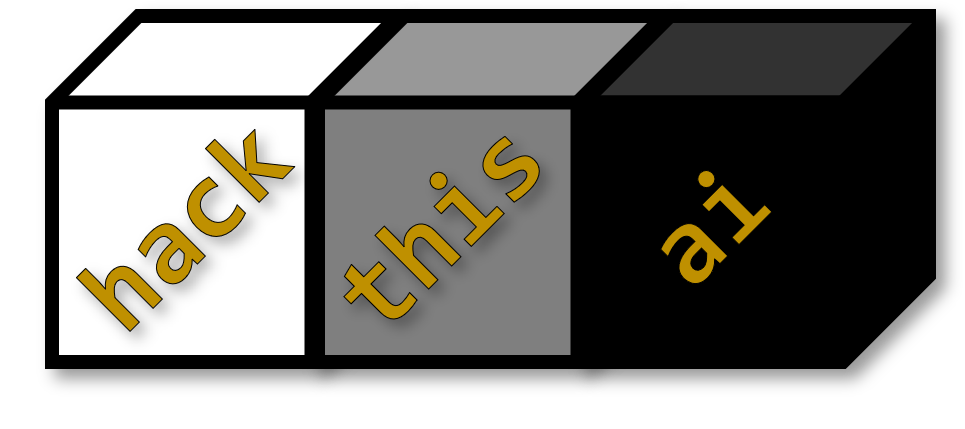HackThisAI is a series of capture the flag (CTF) challenges to educate and train adversarial machine learning techniques. CTFs are a common way information security professionals learn new skills and compete across the community. Challenges are categorized so that players can focus on specific topics. The HackThisAI challenges should be approachable for new data scientists, machine learning engineers, and traditional infosec professionals, but progress in difficulty to a point that requires combinations of advanced techniques and creative approaches.
Currently, I've prototyped some small challenges to illustrate how the CTF would work. If you're interested in supporting the project or collaborating, please contact me.
Often, you'll see adversarial machine learning tasks classified into these buckets. It's a useful framework for bringing an adversarial mindset to AI/ML products, but remember that these tasks are not mutually exclusive. Complex objectives may require combinations of methods that traditionally belong in these categories.
- Evade the model. Can you evade or fool the model? In many applications, model classification is used in control flow:
if model.predict() == A: do this; else: do that. If you can successfully control the model output, you may have some sway over control flow. Evasion is also a fundamental task that may help with influence and steal challenges. - Influence the model. Can you change how the model operates? You may have direct or indirect access to training data or model training steps.
- Steal the model. Can you steal, extract, or invert the model? In traditional hacking, you might want to use access to exfiltrate a model binary. However, in these challenges, you'll want to interact with the model API to learn things about it's structure and find a way to recreate it.
- Infer membership. Was this data point used in the model training process? If you can determine that, you could violate privacy considerations or start learning things about the training dataset.
All of the challenges are self contained in the challenges directory. As provided, it would be easy to make any of these white box challenges by looking at the source. However, most were designed to be black box (no knowledge of the underlying source).
Each challenge is contained in a docker container. You interact with the challenges through flask endpoints. I've tried to provide all of the necessary commands, but these prototypes may take some tinkering. If you hit any roadblocks, post an issue and I'll try and help.
The general flow is:
Requirement: Docker
- Clone this directory.
- Navigate to a challenge directory.
- Run the commands in
README.md.
Alternatively:
- Run
docker-compose upfrom thechallengedirectory. If you launch this way. You'll create containers for all of the challenges with the following port mapping:
5001: easy_credit_check
5002: easy_learning_to_fly
5003: easy_darth_plagueis
5004: medium_stonks
5005: medium_honey_i_shrunk_the_pets
5006: medium_rob_vader
5007: medium_flying_pig
5008: bad2good
5009: baseball
5010: honorstudent
Make sure you're submitting your solution to the correct port.
If you are more comfortable in Jupyter Notebooks, you should be able to run the challenges from example.ipynb. This notebook will build the containers and run them. You can then interact with them from the notebook. In fact, example.ipynb should allow you to complete easy_credit_check. Unfortunately, you still need to have jupyter notebooks and docker on your system.
For challenges where you are inverting/stealing models, you'll need to use dill. I would prefer to use joblib or pickle, but couldn't get them to completely package objets that would allow players to submit instances. Another option was having players submit .py files, but then there's a whole dependency challenge. The final solution (that would require the most engineering on the their part) would be having players expose an API that I can test. If you know any better method, please let me know. More here.
Follow @HackThisAI to hear about new challenges, substantive updates, or any future live-conference CTF events.
